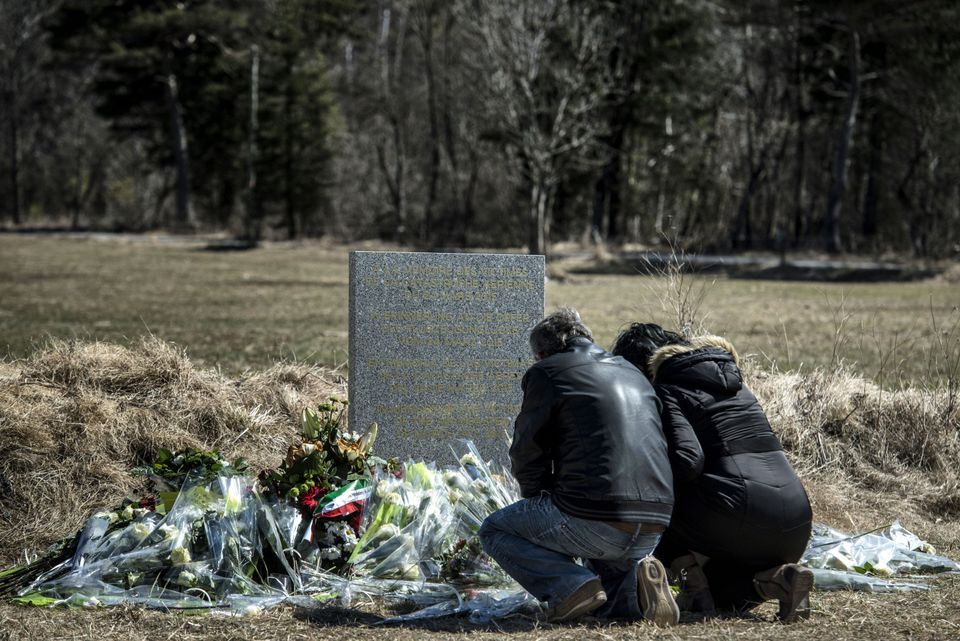WASHINGTON -- Evidence is mounting that the co-pilot of a Germanwings plane that crashed in the French Alps earlier this week may have deliberately downed the plane, killing all 150 people on board. This isn’t the first time that a commercial pilot has been suspected of intentionally crashing an aircraft.
German Andreas Lubitz, the 28-year-old pilot suspected of taking down the plane, reportedly locked his co-pilot out of the cockpit before the plane crashed, taking what a French prosecutor called voluntary, deliberate action to destroy the aircraft.
It’s a scary thought, but not unprecedented. The Washington Post reported last year that according to Federal Aviation Administration data, 24 American pilots over the last 20 years have killed themselves while flying planes.
It's still not clear why Lubitz may have crashed his own flight. Other pilots have been suspected of downing their own planes in order to get revenge, due to mental health issues or even over a reported lovers' spat. Here are some of the most prominent incidents involving commercial pilots over the last three decades:
Japan Airlines Flight 350: On Feb. 9, 1982, a Japan Airlines flight traveling from Fukuoka to Tokyo dove into Tokyo Bay shortly before landing, killing 24 of the 174 people on board. According to Japan Airlines, the probable cause of the crash was the captain’s “mental illness.” The Aviation Safety Network reported that the co-pilot tried to stop the plane from crashing, but did not succeed. The captain had suffered recently from a “psychosomatic disorder” and had taken a year off work to deal with mental health issues, according to the Aviation Safety Network.
Royal Air Maroc Flight 360: On Aug. 21, 1994, RAM flight 630 was flying from Agadir to Casablanca, Morocco, when the plane nosedived into the Atlas Mountains about 10 minutes after takeoff. The crash left 44 people dead. According to the Aviation Safety Network, evidence suggested that the captain disconnected autopilot and crashed the plane on purpose. The Guardian posed that a possible explanation was a “lovers' quarrel with his female co-pilot, picked up on the cockpit voice recorder.” However, the Moroccan Pilot’s Union challenged claims that the crash was intentional.
SilkAir Flight 185: On Dec. 19, 1997, a SilkAir plane traveling from Jakarta to Singapore plunged into a jungle river in Indonesia, killing all 104 people on board. Investigators later determined that the pilot, Tsu Way Ming, intentionally disconnected the cockpit voice recorder before sending the Boeing 737 into a devastating nosedive. Ming could have reversed the plane’s doomed course and pulled it out of the tailspin, investigators said, but he did not take action. It was later found that Ming, a former stunt flyer for the Singapore Air Force, had been having financial troubles and had recently found himself in the crosshairs of SilkAir management.
Air Botswana: On Oct. 11, 1999, an Air Botswana pilot took off from Gabarone in a ATR-42 with no passengers. According to the BBC, the pilot told the control tower that he intended to kill himself and then flew around for almost two hours. He eventually crashed the aircraft into two other planes on the ground, killing himself.
EgyptAir 990: On Oct. 31, 1999, an EgyptAir plane traveling from New York to Cairo crashed into the ocean near Nantucket, Massachusetts. The crash killed all 217 people on board. The Atlantic reported that according to cockpit recordings, the aircraft started descending while one pilot, Captain Ahmed el-Habashi, was in the bathroom. The co-pilot, Gamil el-Batouty, repeatedly yelled, “I rely on God” as he forced the plane to dive. Habashi returned to the cockpit and struggled to save the plane, at one point yelling, "What is this? What is this? Did you shut the engines?"
As far as possible motives go, the Guardian reported that “el-Batouty had earlier been reprimanded for sexual misconduct and the executive who told him he would not be allowed to fly US routes again was on board the plane.” U.S. authorities concluded that the crash was not an accident, but Egyptian authorities said Batouty was not responsible.
Mozambique Airlines TM470: On Nov. 29, 2013, a Mozambique Airlines flight bound for Angola went down in a southwestern corner of Mozambique, killing all 33 on board. In circumstances eerily similar to what investigators are currently speculating about the Germanwings flight, data recordings indicated that TM470’s co-pilot had left the cockpit to use the bathroom, and returned to find himself locked out by the remaining pilot. Locked in the cockpit alone, the experienced captain set the plane to descend to below ground level from a 38,000 feet cruising altitude, idling the engines and setting them to maximum speed. Voice recordings indicate that in TM470's final seconds, someone was pounding on the locked cockpit door.
